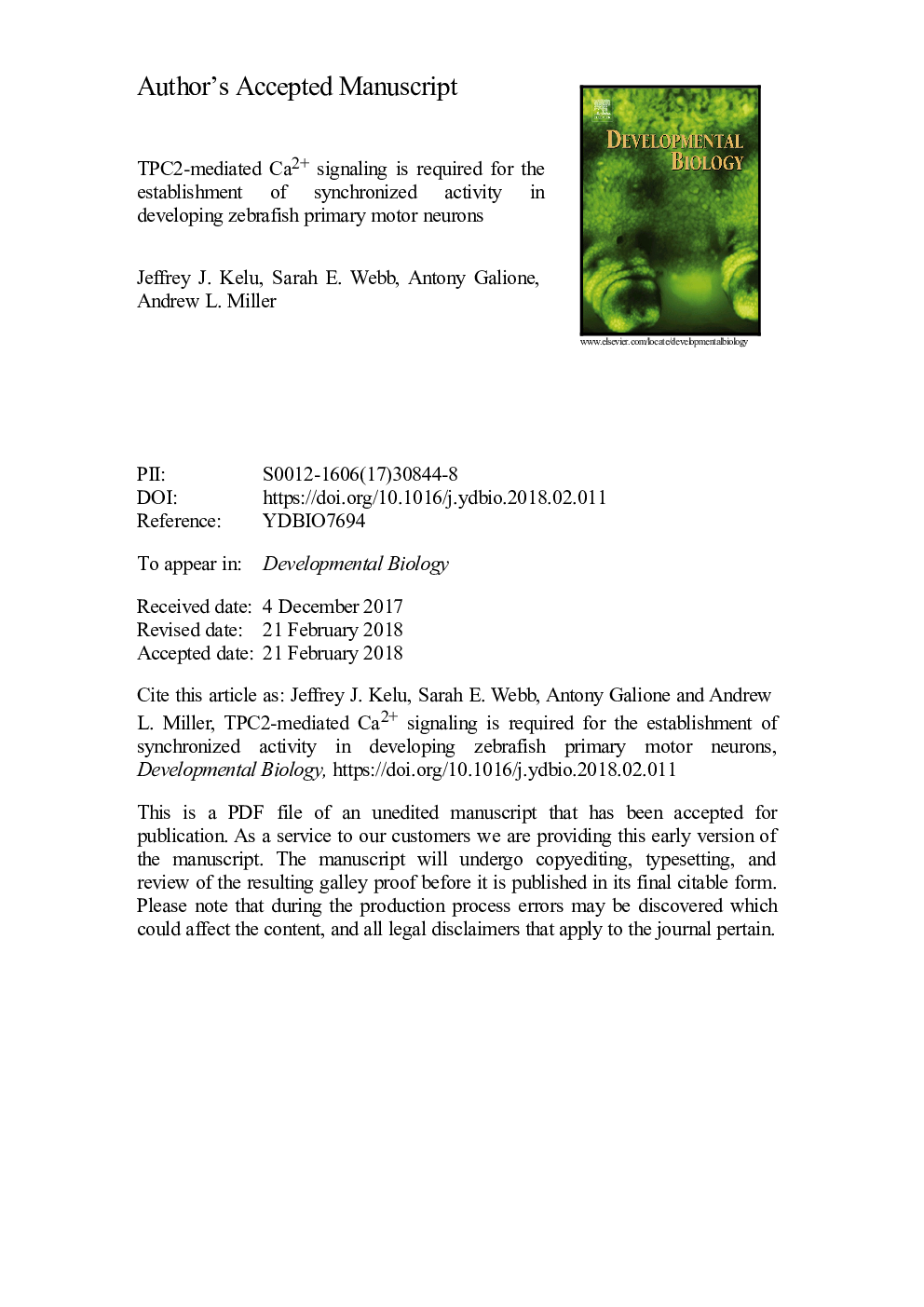| Article ID | Journal | Published Year | Pages | File Type |
|---|---|---|---|---|
| 8467298 | Developmental Biology | 2018 | 28 Pages |
Abstract
During the development of the early spinal circuitry in zebrafish, spontaneous Ca2+ transients in the primary motor neurons (PMNs) are reported to transform from being slow and uncorrelated, to being rapid, synchronized and patterned. In this study, we demonstrated that in intact zebrafish, Ca2+ release via two-pore channel type 2 (TPC2) from acidic stores/endolysosomes is required for the establishment of synchronized activity in the PMNs. Using the SAIGFF213A;UAS:GCaMP7a double-transgenic zebrafish line, Ca2+ transients were visualized in the caudal PMNs (CaPs). TPC2 inhibition via molecular, genetic or pharmacological means attenuated the CaP Ca2+ transients, and decreased the normal ipsilateral correlation and contralateral anti-correlation, indicating a disruption in normal spinal circuitry maturation. Furthermore, treatment with MS-222 resulted in a complete (but reversible) inhibition of the CaP Ca2+ transients, as well as a significant decrease in the concentration of the Ca2+ mobilizing messenger, nicotinic acid adenine diphosphate (NAADP) in whole embryo extract. Together, our new data suggest a novel function for NAADP/TPC2-mediated Ca2+ signaling in the development, coordination, and maturation of the spinal network in zebrafish embryos.
Keywords
Related Topics
Life Sciences
Biochemistry, Genetics and Molecular Biology
Cell Biology
Authors
Jeffrey J. Kelu, Sarah E. Webb, Antony Galione, Andrew L. Miller,
